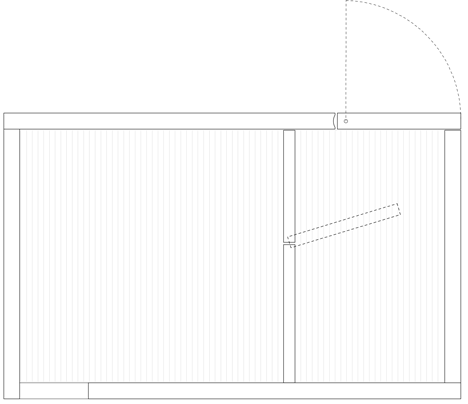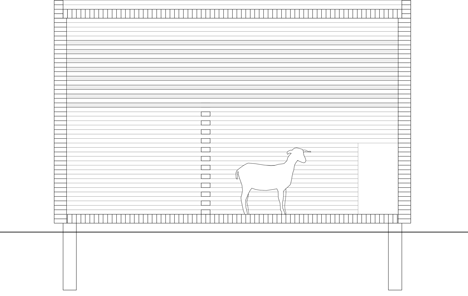Michael Kühnlein builds a timber barn for his herd of pygmy goats
A small wooden shed constructed from stacks of timber planks in a Bavarian field forms a home for a herd of goats owned by German architect Michael Kühnlein (+ slideshow).
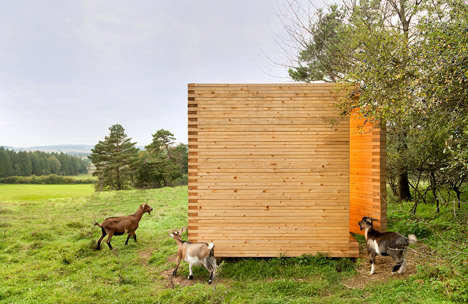
Kühnlein – who runs local studio Kühnlein Architektur with Michael Kühnlein senior – built the small, flat-roofed shed on a site beside a grove of trees near the miniature goats' grazing pastures in Upper Palatinate, a region in eastern Bavaria.
Taking the traditional wooden houses of the local region as a starting point, the architect set about designing a structure that could be built entirely from timber. With the help of a friend, he constructed the shed by stacking narrow planks of pale spruce wood and using only nails to join the walls, floors and roof.

"The wooden cube, reduced to the necessaries, should be a positive example for agricultural buildings, integrating the free landscape around it," said Kühnlein.
"Calculations and expensive materials are needed for the execution of any elaborate plans," said the architect, who instead selected the planks of spruce as a cheaper alternative to prefabricated sheds. "It is an attractive and economical alternative to manufactured garden sheds as they are available in hardware stores."
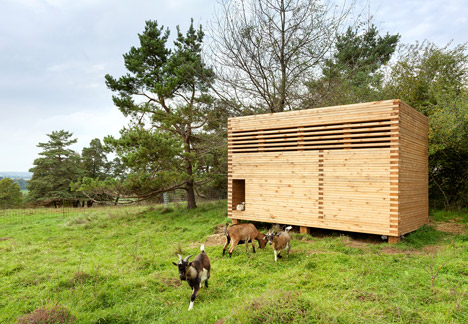
The interlocked walls are formed from alternating long and short lengths of timber. This overlapping formation produces a pattern from the smooth lengths and sawn ends that run vertically down each corner of the shed.
Slender horizontal openings produce a grill along the front of the structure that provides ventilation and daylight for the goats.
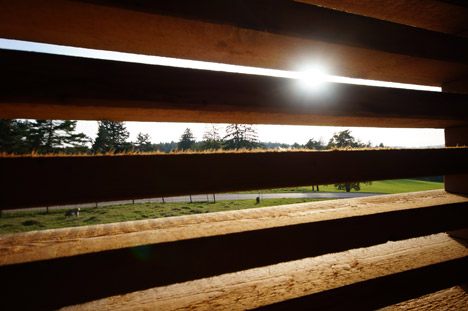
The shed is raised on chunky timber legs over the uneven ground to provide a flat floor for the animals. The floor platform is made from vertically laid planks, in keeping with the design of the walls.
A small doorway set into the facade where the floor is furthest from the ground provides a goat-scale entrance that takes advantage of the animals' natural agility, while a full-height door hinges from the rear corner of the structure to provide an opening that allows humans to enter and clean out the shed.
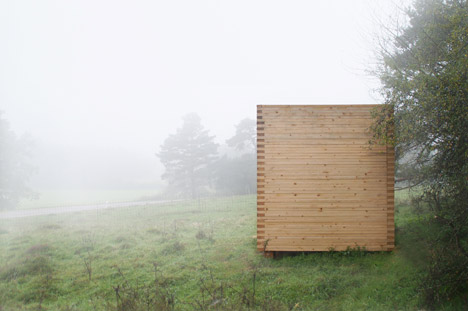
Inside, the shed is divided in two by a slatted partition wall that separates the animals from a feed storage area.
The project was the winner of the Bavarian timber award Holzbaupreis Bayern 2014, an annual competition sponsored by the Bavarian State Ministry of Food, Agriculture and Forestry for energy-efficient and cost-effective wooden architecture.
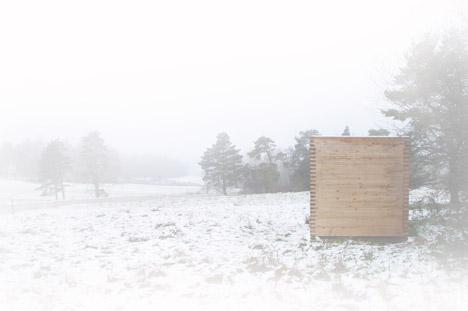
Photography is by Erich Spahn.
